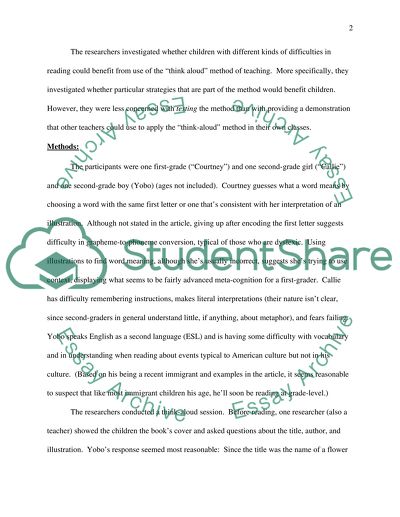Cite this document
(“Teaching Issues Research Paper Example | Topics and Well Written Essays - 1000 words”, n.d.)
Retrieved from https://studentshare.org/education/1513725-the-think-aloud-method-of-teaching-for-children-with-different-kinds-of-difficulties-in-reading
Retrieved from https://studentshare.org/education/1513725-the-think-aloud-method-of-teaching-for-children-with-different-kinds-of-difficulties-in-reading
(Teaching Issues Research Paper Example | Topics and Well Written Essays - 1000 Words)
https://studentshare.org/education/1513725-the-think-aloud-method-of-teaching-for-children-with-different-kinds-of-difficulties-in-reading.
https://studentshare.org/education/1513725-the-think-aloud-method-of-teaching-for-children-with-different-kinds-of-difficulties-in-reading.
“Teaching Issues Research Paper Example | Topics and Well Written Essays - 1000 Words”, n.d. https://studentshare.org/education/1513725-the-think-aloud-method-of-teaching-for-children-with-different-kinds-of-difficulties-in-reading.


